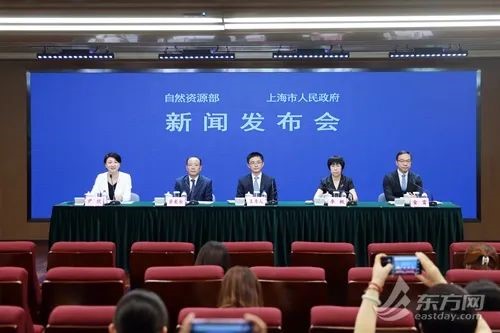



On June 23rd, the Ministry of Natural Resources (MNR) and the Shanghai Municipal People’s Government co-held a press conference. On the press conference, Feng Li, the Deputy Director of the Territory Spatial Planning Bureau, has introduced the planning background and contents of the newly released design guideline - Spatial Planning Guidance: Community Life Unit.
Based on the practical planning experience of building community life units from multiple municipalities including Shanghai and Beijing in 2019, the Ministry of Natural Resources started the drafting process of the Spatial Planning Guidance: Community Life Unit on 2020.
01 Planning Background
Cities are the major place of human life. If the city is seen as an organic unity, the communities are the cells that constitute this organic unity. In the new era of ecological civilization, under the critical guidance of President Xi Jinping’s concept of ‘people’s city’, it is crucial to further emphasize the people-oriented initiative and focus on elevating the living quality of cities.
The communities are the base unit for social governance. Especially after the pandemic hits, the communities are holding more complex functions. The effects of the communities are increasingly significant, and are the foundations of modernizing the country’s governance system and ability. By building community life unit, as well as the spatial unit more suitable for work, life, travel, well-being and learning to activate the ‘urban cell’, the cities will be more charismatic and energetic.
To better fulfill people’s ardent love for life, the MNR organized Shanghai’s Municipal Government and other research and design group to draft this Guide, in order to make full use of the community life circle as the basic platform for urban and rural community development and governance, to further push for the transition of the city’s development pattern and residents’ lifestyle, to build a city that is safe, healthy, convenient and filled with vitality. Hopefully this industry standard could guide local governments to better draft plans for community life circle, and improve the relevance, rationality and practicality of the draft and implementation of related plans and contents.
02 Drafting Process
The MNR started the preliminary research of the guide since November, 2019. Firstly, the research summarizes the urban community life circle planning experience from Beijing, Guangzhou, Shenzhen, Hangzhou, Xi’an, and Wuhan, etc. Based on the planning experience, the drafting process takes the advantage of the ‘multiple planning integration’ initiative, draws references from the implementation experience from the rural community life units in Shanghai and Chengdu, to coordinate rural and urban area and continue to drive the rural revitalization. Secondly, hold both online and in-person consultations to widely consult the opinions from experts, the public, as well as users, to further revise the guideline.
The Guide has been released on June 9th, and came into effect since July 1st, 2021.
03 Contents
The Guide includes body contents, appendixes and references. The body contains eight chapters, focusing on the general principles, urban and rural community unit planning guide, difference guide, and implementation requirements. The main contents includes:
1.Value orientation. As the technical guide for community life unit planning, the Guide follows five major principles, including people-orientation, carrying out the latest development concept, emphasis on problem-oriented and goal-oriented, enhancement of systemic governance, and construction of distinctive life unit according to local conditions.
2.Coverage of both the urban and rural areas. The Guide illustrates planning guides in the service configuration level, service elements and spatial allocation for both urban community life unit and rural community life unit. The urban community life unit could establish at ‘15-minute’ service level and ‘5 to 10-minute’ service level. The rural community life unit could establish at county/town-village service level and group service level.
3.Guide the difference. Differentiate the service elements to guaranteed base-level type, quality improving type, and distinguished feature type. Offer different guides and requirements for community services, employment guide, housing improvement, daily commute, leisure and public safety. Local authorities could coordinate economic capacity and resources based on local conditions, integrate the demand of residents, and evaluate the major impactors to further refine the technical requirements in the Guide.
4.Focus on implementation. As the basic spatial unit in the territorial spatial planning, the community life circle is the important key for the implementation of the territorial spatial plan, as well as the major subject of the planning evaluation. The Guide comprehensively took the full life cycle approach, clarified working procedures including current status assessment, planning draft, action plan draft and dynamic monitoring. The Guide also proposed action focuses on newly-built areas, urban renewal areas and old residential neighbourhoods, and encourages departmental coordination, public participation and social co-construction.
Source: <https://mp.weixin.qq.com/s/Vfa9YSLfTW0YgeeBbxbpmA>
Translated by Fan Junyi